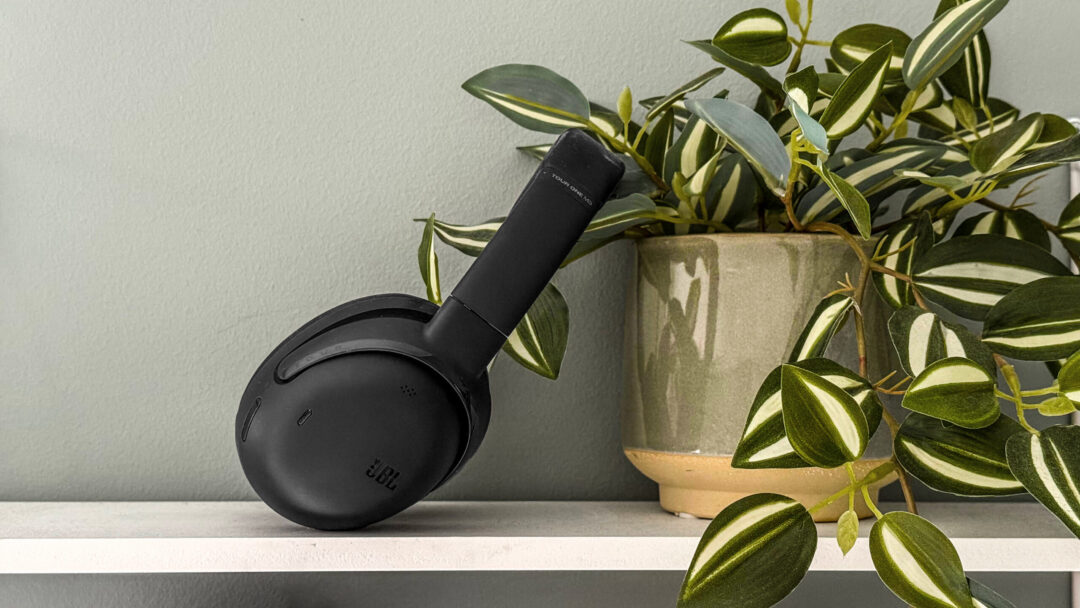The JBL Tour One M3 has something I’ve never encountered in a headphone box before: a small box with a touchscreen that transforms old audio sources into modern Auracast transmitters. Smart Tx, as it’s called, is as ingenious as it is practical.
Imagine you’re sitting on a plane and want to share a movie with the person next to you. Or you want to connect your headphones to your old stereo system at home. Maybe more than one pair of headphones? What if you want to have a silent disco with your friends? With Smart Tx, it’s a breeze—and that’s just one of the things this little gadget can do.
The small touch screen also serves as a remote control for the headphones. With it, you can adjust the equalizer, spatial sound, and other features without having to take out your phone. This is especially handy if you use the headphones with your PC, where the JBL app is not available.
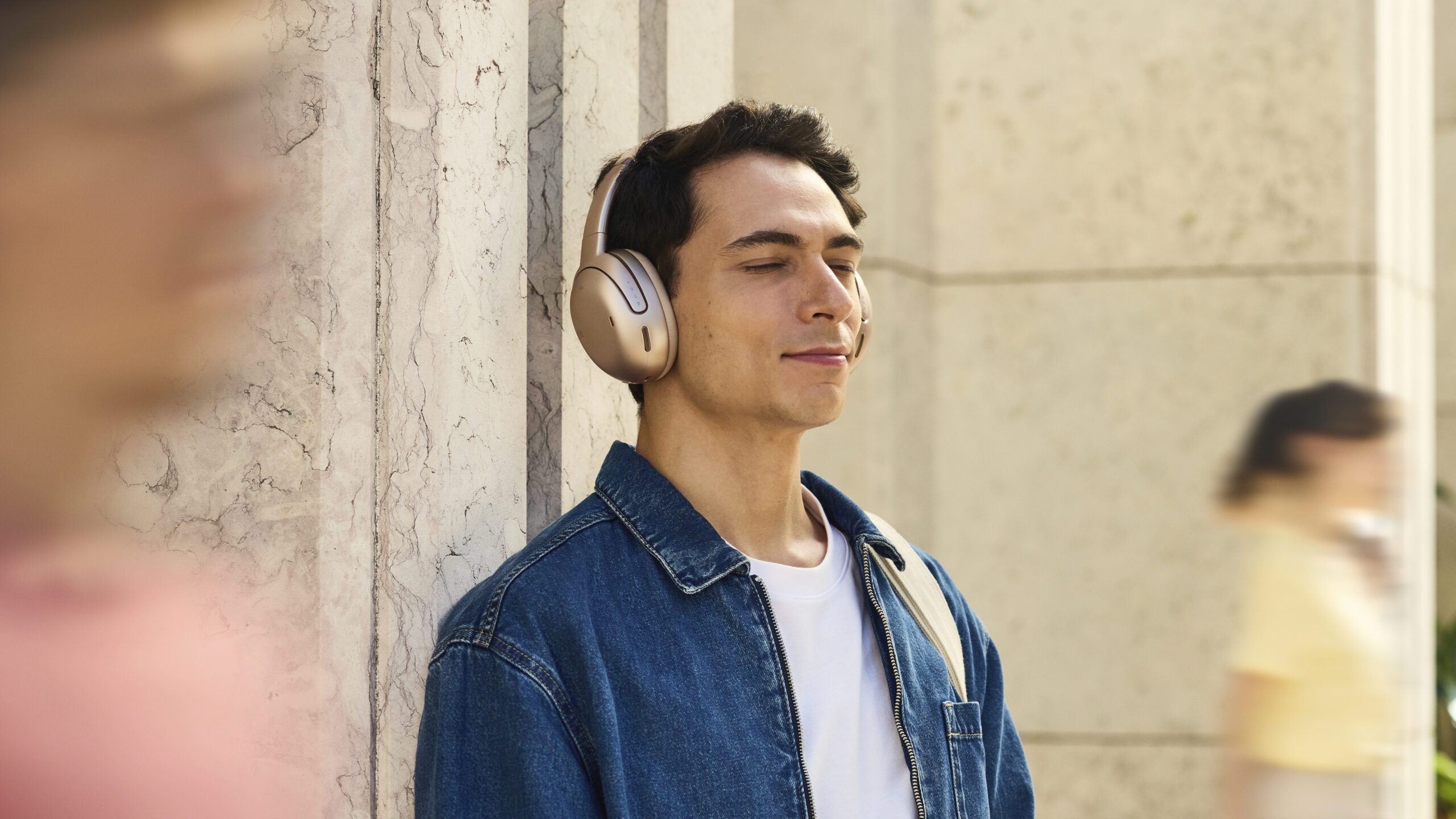
Unparalleled comfort
Weighing in at 278 grams, the Tour One M3 is in the same low weight class as other top models from Sony and Bose. But weight alone does not guarantee comfort. This is where the memory foam cushions come into play, shaping themselves perfectly around the ears, and even after many hours of listening, the only discomfort is that the ears become slightly moist.
The headband distributes the weight evenly, and the fit is just right. I often wear reading and screen glasses, and that’s no problem—the cushions are soft and pliable enough that the arms of the glasses don’t press uncomfortably against my head. You notice it after a while, it can’t be avoided, but they’re still some of the most comfortable headphones I’ve ever experienced.
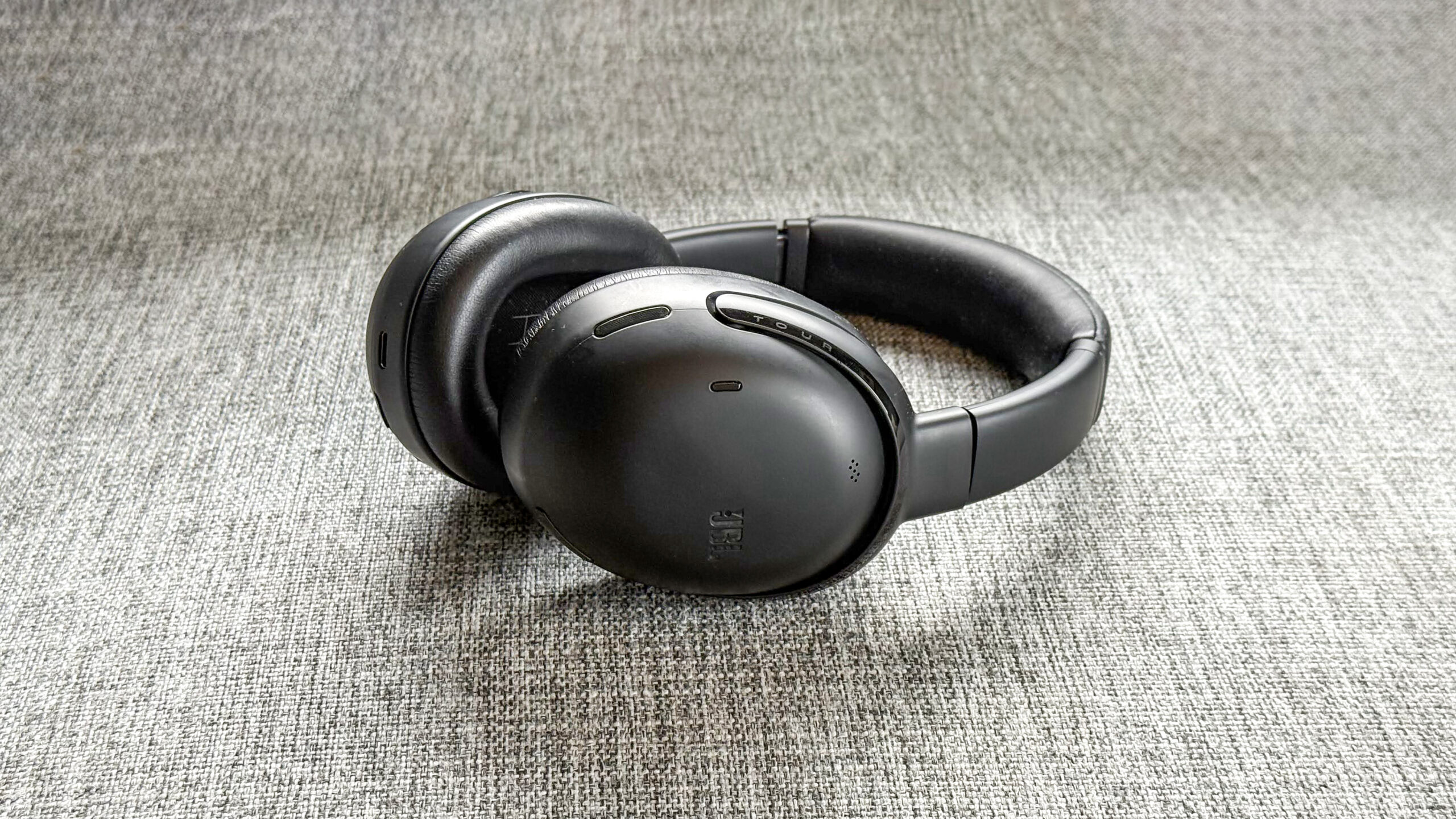
The sound of the JBL Tour One M3
JBL has always had its own sound signature – warm, rich, and entertaining. The Tour One M3 continues this tradition, perhaps with a slightly better balance than previous models. Still, it works well with the EQ curve I made for the original Tour One, so there’s not much difference. The 40 mm drivers are made from mica, a mineral whose properties are said to be well suited for sound reproduction. And the Tour One M3 delivers deep, controlled bass that doesn’t drown out the rest of the sound.
The midrange is clear and detailed, while the treble has just enough air and openness. The sound right out of the box is definitely acceptable—in fact, I prefer the default setting to most of the presets in the app. I can see that some reviewers like Jazz, others Club. Personally, I just prefer to make a tiny adjustment myself.
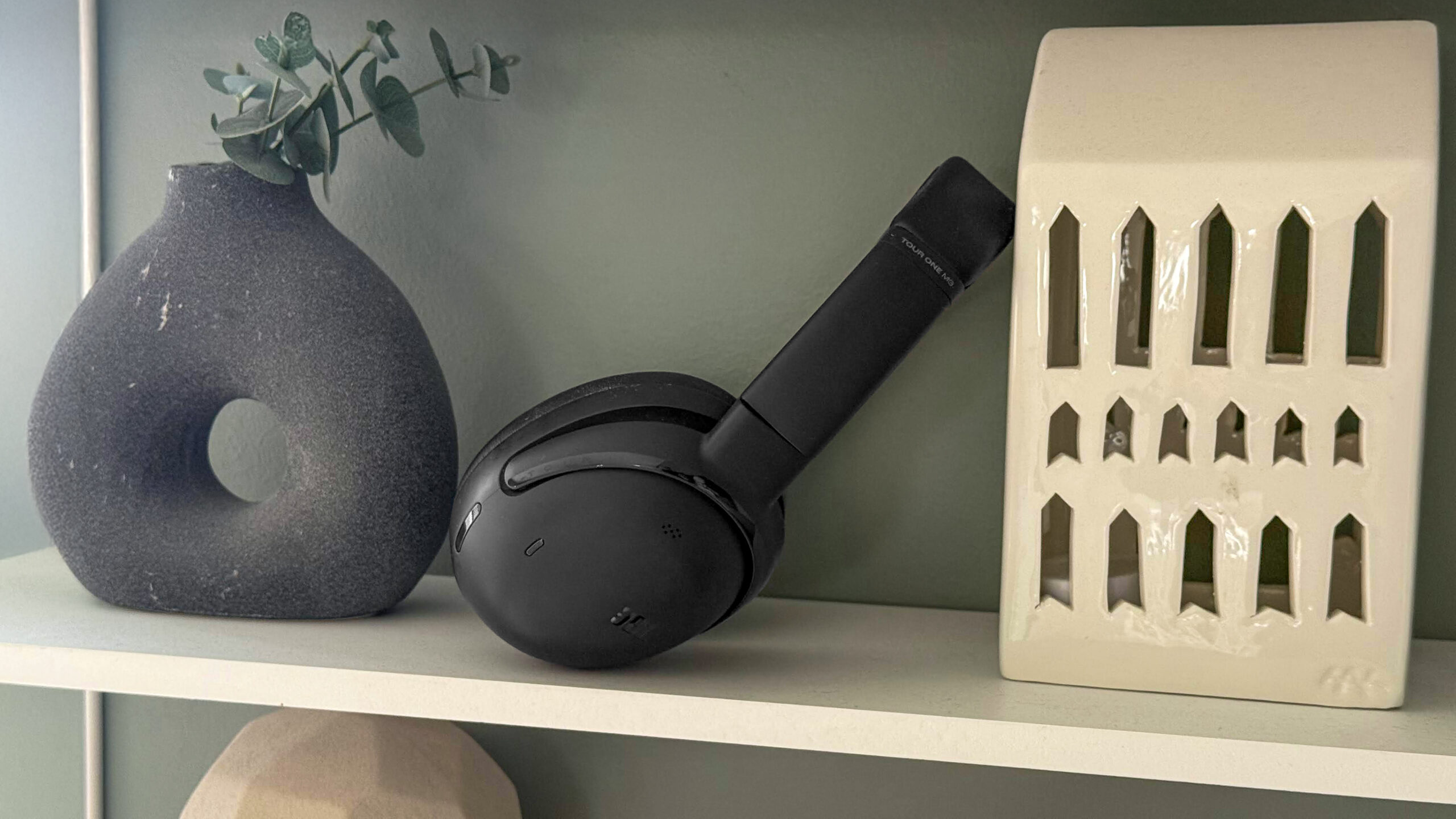
By gently boosting around 1 kHz, I get the extra clarity in the midrange that I want, especially on vocals. At the same time, I attenuate the area around 4 kHz slightly, with a small dip at 2 and 8 kHz. This creates a subtle V-shape in the treble range, which attenuates any harshness without stealing the detail or airiness. The result is a more relaxed but still detailed treble.
A big advantage is the support for lossless audio via USB-C. If you connect the headphones directly to your PC with a cable, you get a noticeable, albeit subtle, improvement. LDAC over Bluetooth also provides really good sound quality with better resolution than standard Bluetooth codecs. You can also try LE Audio, but I prefer LDAC. Note that if you want to use Auracast, they MUST be connected with LE Audio, which transmits the sound with the LC3 codec.
Finally, I would like to mention that the JBL ear cups have a feature that creates a personal hearing profile by conducting a hearing test in the JBL Headphones app. This adapts the sound to your individual hearing. For example, if you don’t hear high frequencies very well, the sound will be adjusted accordingly. For me, it works reasonably well, while others may get better results.

Noise cancellation that works
With eight microphones distributed across both ear cups, JBL has all the hardware necessary to achieve effective noise reduction. And they deliver the goods – perhaps not quite on par with the Sony WH-1000XM6, but certainly close.
The most impressive thing is the absence of his. Many noise-canceling headphones have an audible hiss when the feature is activated, but the Tour One M3 is almost completely silent. This makes them comfortable to use even in quiet environments. That said, the bass sounds a little tighter and better defined when noise reduction is turned off.
The adaptive noise cancellation automatically adjusts to the surroundings. When I walk from the office out onto the street, I can clearly feel how the system adjusts to muffle traffic noise. Smart and effective.
In addition to ambient sound (Talk Through), you can turn on Personal Sound Amplification. Here you can choose how much of your surroundings you want to hear—in each ear.
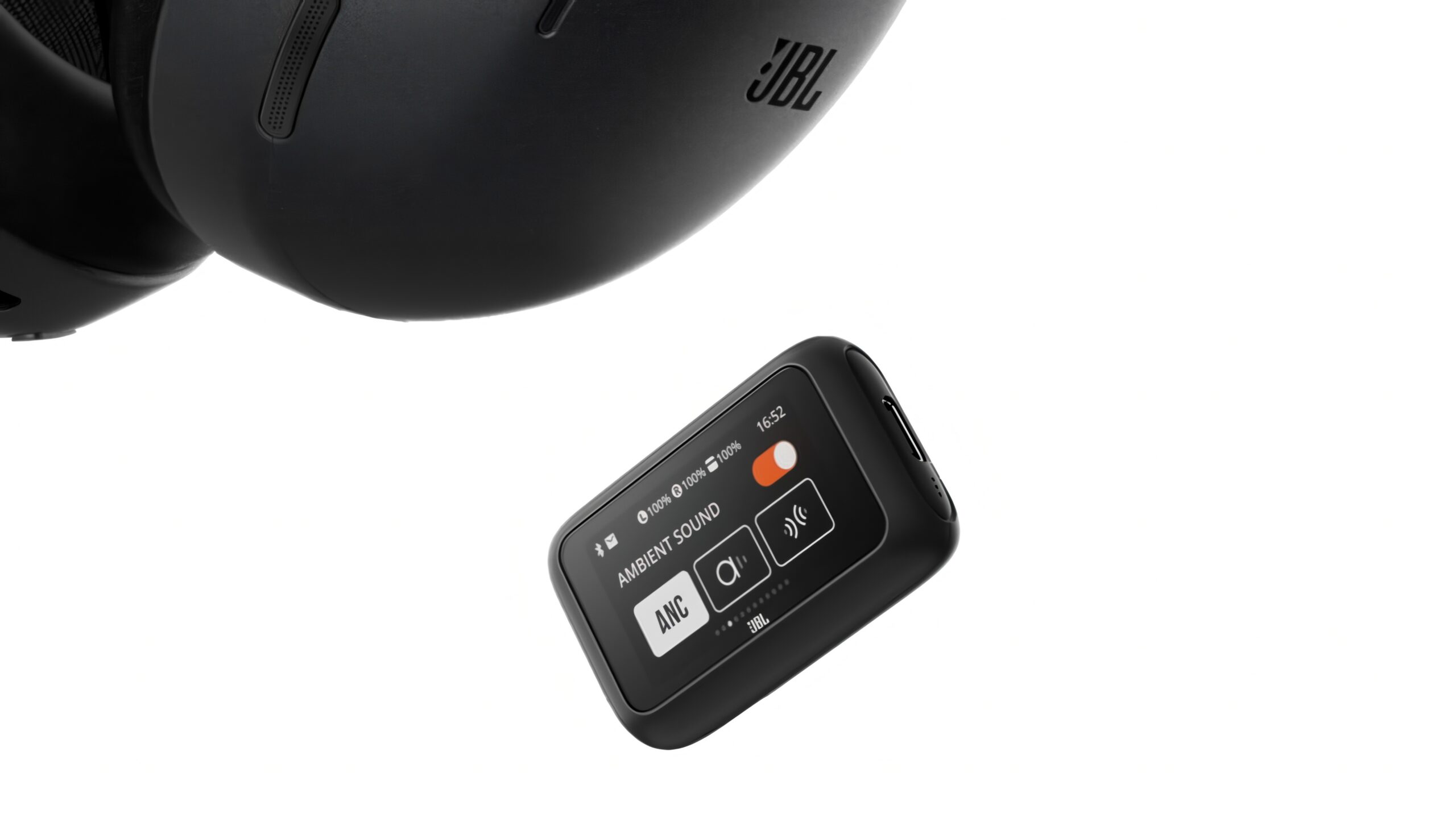
Top-notch voice quality
When it comes to voice quality, you can’t expect a pair of headphones to deliver the same level of performance as an office headset with a microphone boom, but JBL has done surprisingly well. The four adaptive microphones with AI-powered noise reduction do a formidable job. In my tests, conversation partners have consistently commented on how clear my voice comes through, even when I’m walking along a busy road. I’ve also tested it myself by making a voice recording on my iPhone, and here the JBL sounds clearer and more natural than most.
In fact, I prefer JBL over Sony when it comes to voice quality. The voice sounds more natural, and background noise is filtered out impressively. It’s also nice that the headphones are Zoom-certified.
Long battery life
70 hours without noise reduction and 40 hours with—these are numbers that make most competitors pale in comparison. In practice, this means that I can use the headphones for about a month before they need to be recharged, as I typically use them for a few hours a day.
Fast charging via USB-C provides five hours of playback in just 10 minutes. Perfect when you’ve forgotten to charge and need to catch the train.
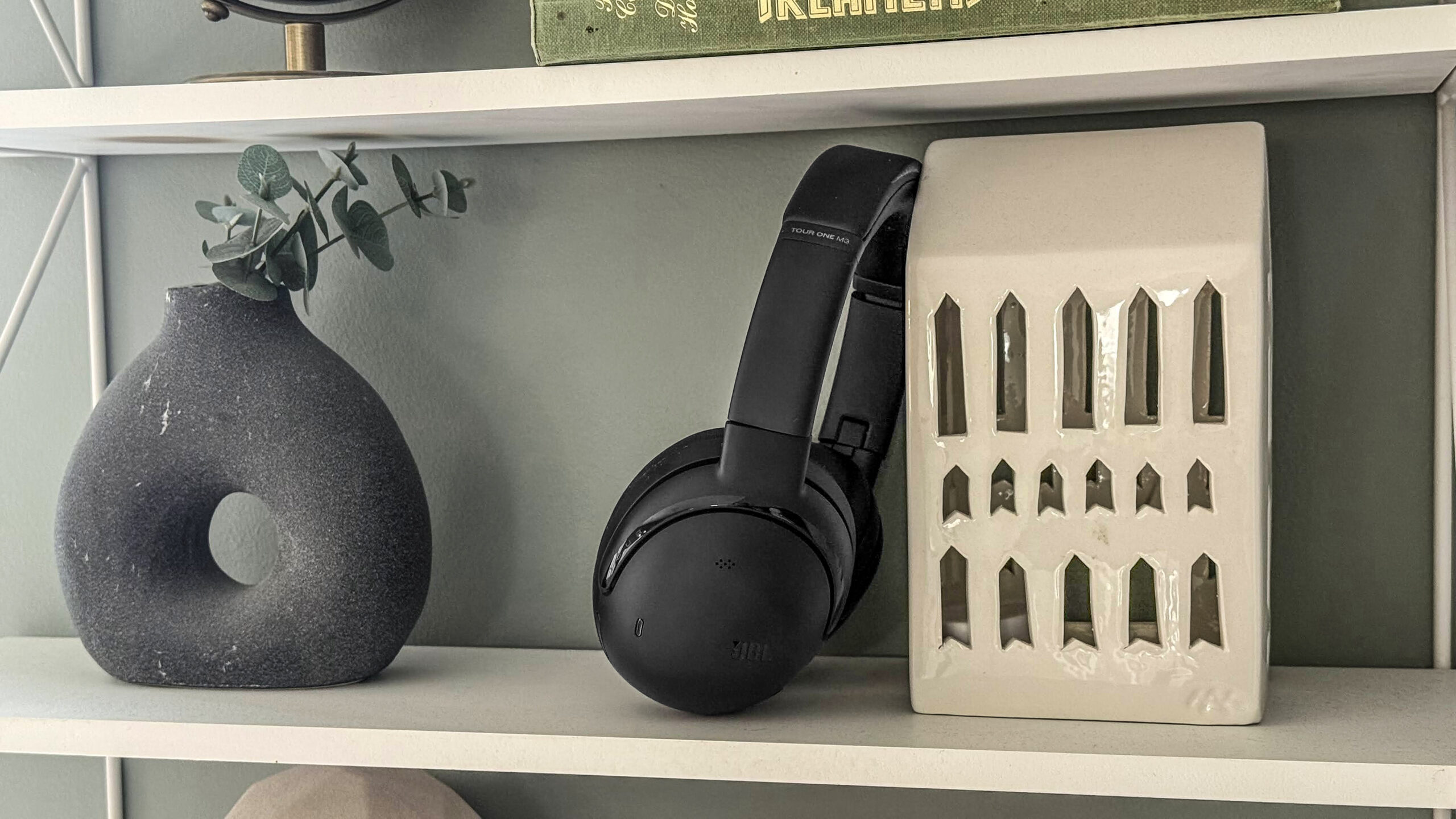
Conclusion
The JBL Tour One M3 isn’t just another pair of good headphones in a saturated market. With the Smart Tx transmitter, wired DAC functionality, and Auracast support, they manage to stand out. Auracast is still in its infancy, but it will likely become much more widespread over time.
The combination of outstanding comfort, solid sound quality, long battery life, and innovative features makes the Tour One M3 one of the most complete headphones available right now. They also cost 20 percent less than the Sony WH-1000XM6, so you get a lot for your money.
For those who want the technology of the future packed into a pair of very good headphones, the Tour One M3 is an obvious choice. Smart Tx alone makes them unique in the market, and as Auracast becomes more widespread, their value will only increase.

We think
The included transmitter is a brilliant addition. Excellent comfort and battery life. Impressive sound and voice quality. Very good noise reduction. Auracast is still in its infancy. There is even better noise cancellation out there.
350 €
Specifications
- Type: Over-ear, closed, wireless
- Drivers: 40 mm Mica dome
- 3D audio: JBL Spatial Sound
- Noise cancellation: True Adaptive ANC 2.0
- Ambient sound: Yes, with Ambient Aware and TalkThru
- Battery life: Up to 70 hours without ANC, 40 hours with ANC
- Microphones: 8 (4 per ear cup)
- Bluetooth: 5.3 with LDAC, AAC, LC3, SBC, Auracast
- Equalizer: 10-band via the app
- Connections: Bluetooth, USB-C, 3.5 mm analog
- Charging: USB-C (5 hours of playback on 10 minutes of charging)
- Weight: 278 g
- Colors: Black, blue, latte
- Web: jbl.com
